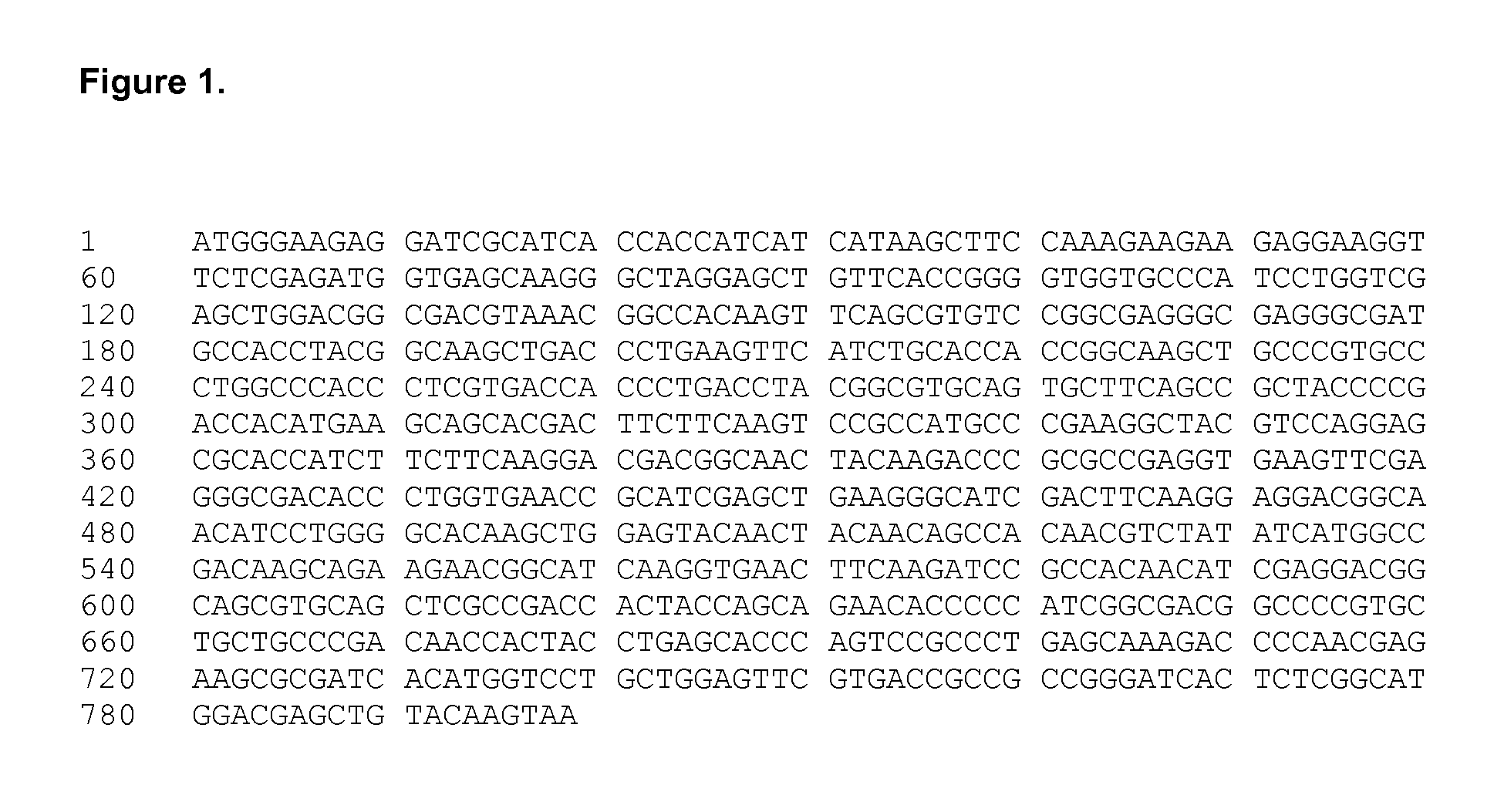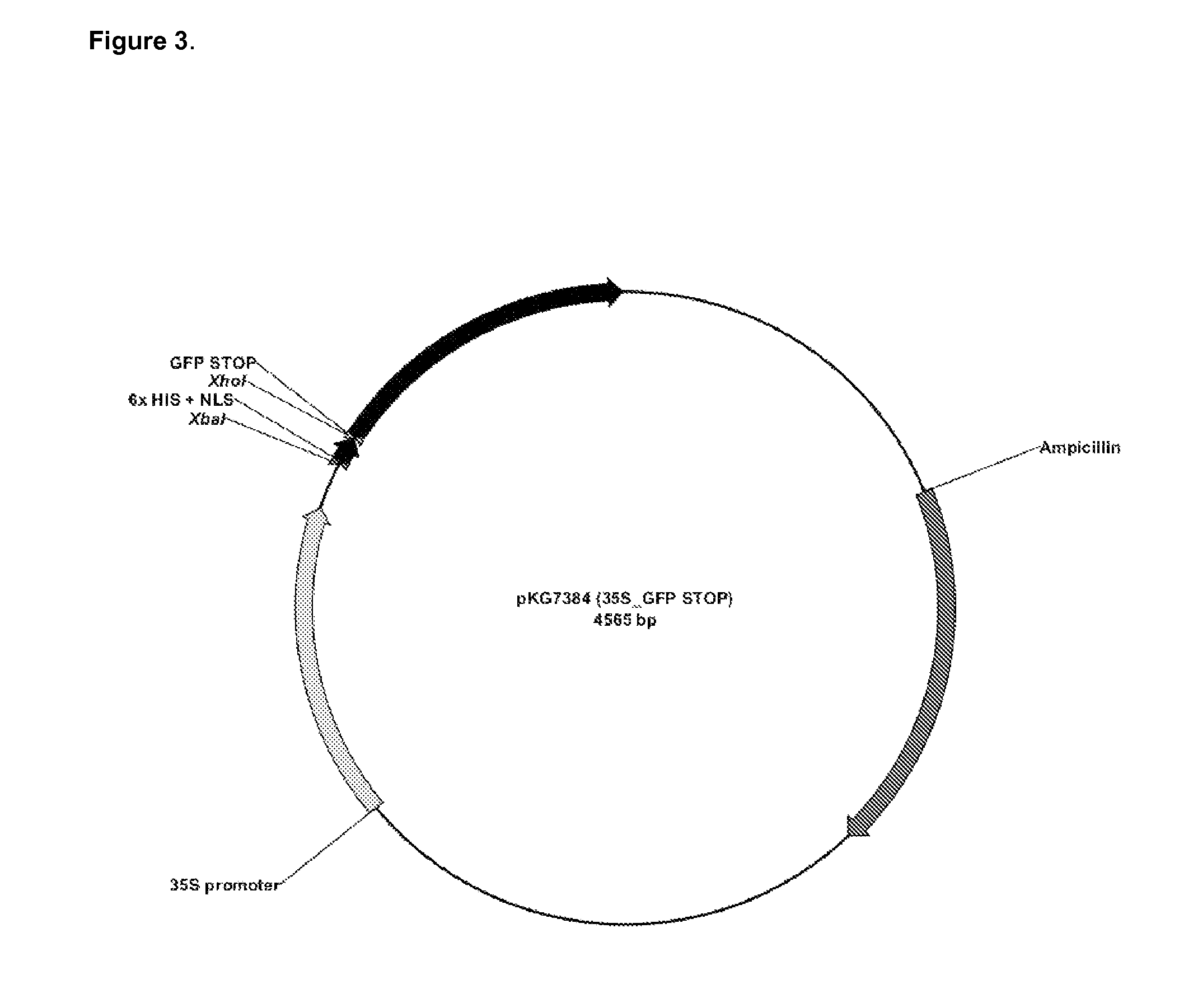Targeted alteration of DNA
a dna and acceptor technology, applied in the field of targeted alteration of acceptor dna, can solve the problems of low frequency reported in plant and animal studies, inability to apply tne on non-selectable chromosomal loci, and the relative low efficiency of application of tne in cells of higher organisms such as plants, so as to prevent premature degradation of oligonucleotides
- Summary
- Abstract
- Description
- Claims
- Application Information
AI Technical Summary
Benefits of technology
Problems solved by technology
Method used
Image
Examples
example 1
TNE on a GFP Episome in Tobacco Protoplasts
[0107]TNE involves the introduction of oligonucleotides into cells where they induce a mutation in the genomic target locus, driven by a mismatch nucleotide in the oligonucleotide.
[0108]In the experiments below accuracy and efficiency of TNE was determined by performing TNE on an episome (plasmid) which carries a non-functional Green fluorescent protein (GFP) containing an in frame stop codon. Co-transfection of this plasmid together with an oligonucleotide designed to repair the stop codon should restore GFP expression and activity which was, in the experiments below, scored at a single cell level 24 hours after protoplast transfection. This first example describes experiments performed in tobacco protoplasts.
Materials and Methods
Constructs
[0109]The functional GFP open reading frame was synthesized and the codon usage was optimized for use in the Solanaceae. A variant of GFP was produced with a nucleotide change at position 82 (G to T) as ...
example 2
TNE at a YFP Episome in Tomato Protoplasts
[0128]Example 1 showed that an oligonucleotide with a mismatch at the 3′ end is efficient in performing TNE. In order to show the broad scope of the use of the method according to the invention and to exclude that the increased TNE efficiency observed with the 3′ oligonucleotide is due to the specific sequence of the oligonucleotide used in example 1 it is important to show that oligonucleotides with an alternative sequence but also with mismatch positioned according to the invention, e.g. a 3′ mismatch, are active in a TNE assay. In addition, it is valuable to demonstrate that the observed effect also occurs in other plant species and so it was decided to perform similar experiments in tomato protoplasts.
Constructs
[0129]Versions of YFP-WT and YFP-STOP, with a nucleotide change located at position 186 (C to T) resulting in a stop codon were generated. Both the nucleotide sequence of the YFP-STOP gene (FIG. 5) and the translated protein seque...
example 3
Effects of PS Linkage on TNE Efficiency
[0134]This example shows that it is not required that the oligonucleotide according to the invention incorporates nucleotides having phosphorothioate linkages nor that is it required that the oligonucleotide according to the invention incorporates any other type of modification.
Methods
[0135]Tomato mesophyllprotoplasts were isolated from young leaves of tomato in vitro plants. Reporter constructs harbouring an eYFP(stop) gene whose expression was driven by the CaMV 35S promoter and oligonucleotides were transfected into tomato protoplasts by a PEG-mediated method. After overnight incubation under dark at 30° C. in a growth chamber, infected protoplasts were observed using a fluorescent microscope equipped with a YFP filter set. The number of protoplasts emitting yellow fluorescence was scored and the TNE efficiency was calculated by dividing the number of yellow protoplasts by the number of transfected protoplasts.
Sequence of Oligonucleotides Te...
PUM
| Property | Measurement | Unit |
|---|---|---|
| osmolality | aaaaa | aaaaa |
| osmolality | aaaaa | aaaaa |
| volume | aaaaa | aaaaa |
Abstract
Description
Claims
Application Information
 Login to View More
Login to View More - R&D
- Intellectual Property
- Life Sciences
- Materials
- Tech Scout
- Unparalleled Data Quality
- Higher Quality Content
- 60% Fewer Hallucinations
Browse by: Latest US Patents, China's latest patents, Technical Efficacy Thesaurus, Application Domain, Technology Topic, Popular Technical Reports.
© 2025 PatSnap. All rights reserved.Legal|Privacy policy|Modern Slavery Act Transparency Statement|Sitemap|About US| Contact US: help@patsnap.com



